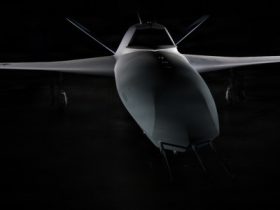Three of Europe’s largest aerospace and defense companies are joining forces to reshape the continent’s space industry. On Thursday, Airbus, Leonardo, and Thales signed a memorandum of understanding to merge their space operations into a new joint venture that—if it wins regulators’ approval—will contain much of Europe’s satellite, communications, and Earth-observation capability.
The new company will bring together Airbus’s Space Systems and Space Digital businesses; Leonardo’s Space Division, including its holdings in Telespazio and Thales Alenia Space; and Thales’s stakes in Thales Alenia Space, Telespazio, and Thales SESO. Based on pro‑forma 2024 figures, the venture will employ around 25,000 people, generate roughly €6.5 billion in annual revenue, and carry an order backlog covering more than three years of projected sales. Ownership will be split with Airbus holding 35 percent and Leonardo and Thales each holding 32.5 percent, with a balanced governance structure under joint control.
The companies believe the combination could generate mid‑triple‑digit million‑euro annual synergies within five years, mainly through operational efficiencies in engineering, manufacturing, and project management. The merger will focus on end‑to‑end space infrastructure and services but will exclude launch vehicles. The venture is expected to be operational in 2027, subject to employee consultations and regulatory approvals.
The new joint venture represents a major step in consolidating Europe’s fragmented space industry. By unifying three established aerospace and defense leaders, the company aims to achieve the scale and expertise needed to compete more effectively with global players, including SpaceX, Northrop Grumman, and Lockheed Martin. The merger also aligns with Europe’s broader goal of strategic autonomy, reducing reliance on non-European technology for critical capabilities such as secure satellite communications, navigation, and defense intelligence.
One notable absence from this consolidation is OHB, a German aerospace company with a strong track record in satellite development and a taste for independence amid industry consolidation. OHB leads the consortium for the planned Odin’s Eye missile warning system, a key element of Europe’s future space-based defense architecture. This positions OHB as both a competitor and potential collaborator in the evolving European space landscape.
The merger is expected to influence several key European space programs:
- Navigation: The new entity could take a leading role in the development, manufacturing, and sustainment of Galileo and EGNOS, Europe’s global and regional navigation systems.
- Earth Observation: It is likely to become a principal contractor for Copernicus programs, providing end-to-end satellite and service solutions.
- Defense and secure communications: The consolidation of military space assets will affect government programs such as GOVSATCOM and next-generation secure networks like IRIS².
- National military satellites: Programs such as France’s Syracuse, Italy’s SICRAL, and the UK’s Skynet may benefit from shared technology development and cost efficiencies.
- Satellite operations and data services: With stakes in companies like Telespazio, the new venture will be positioned to influence commercial and public satellite operations and downstream data services.
Read the full article here








Leave a Reply